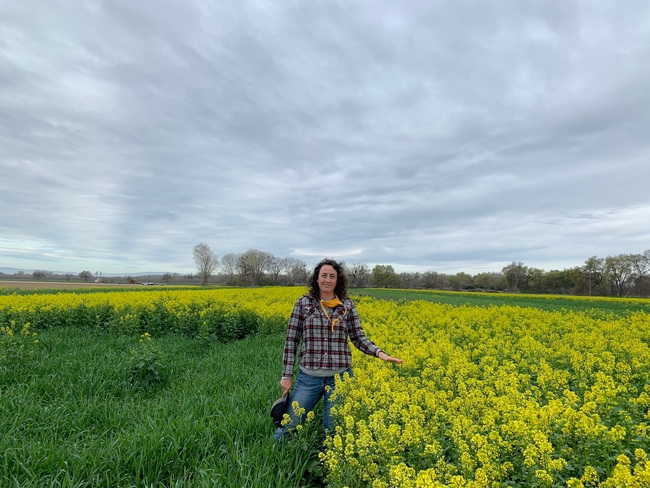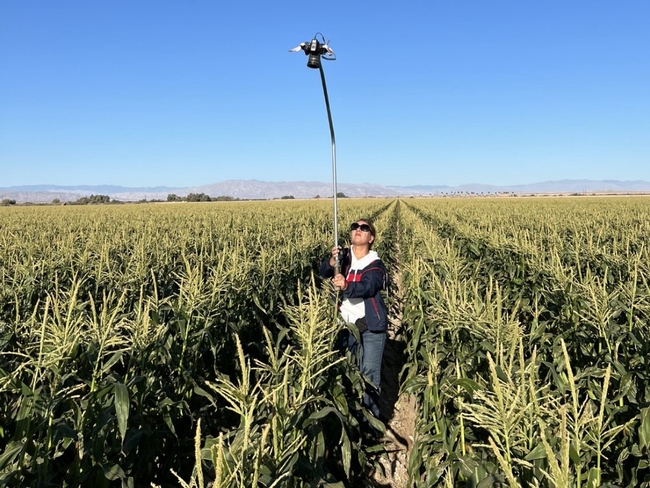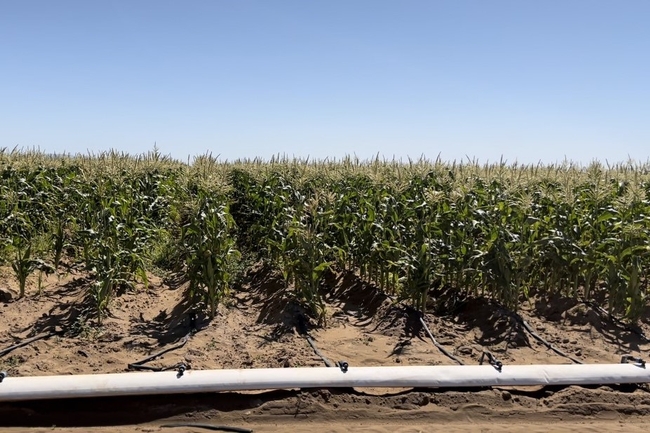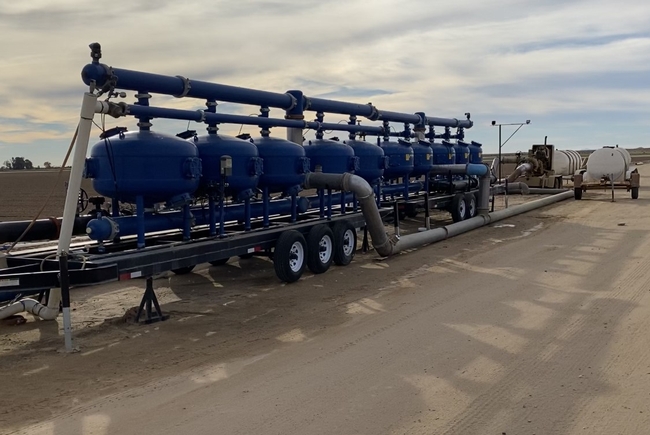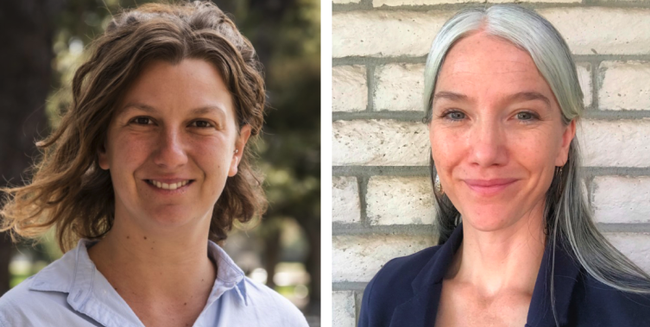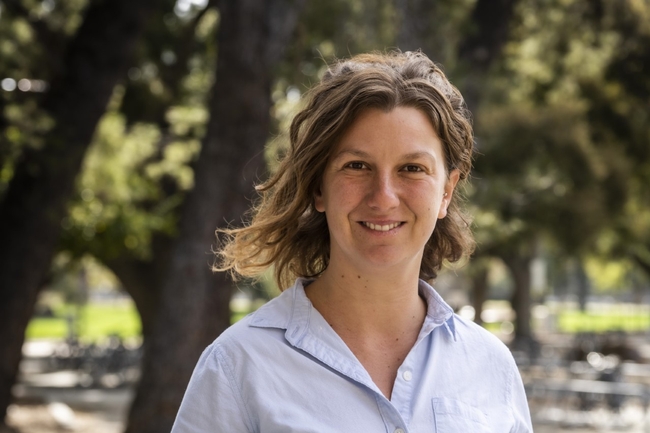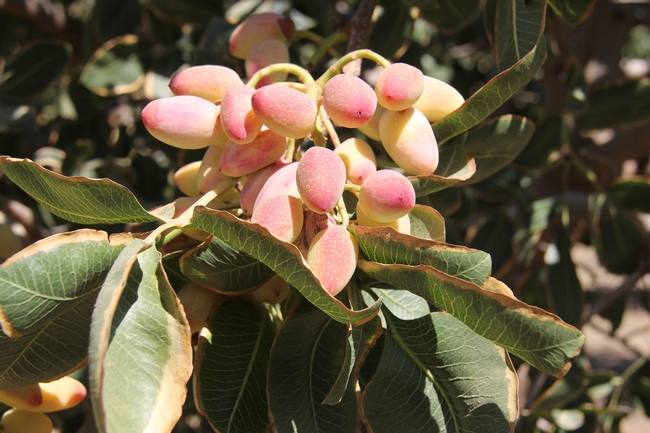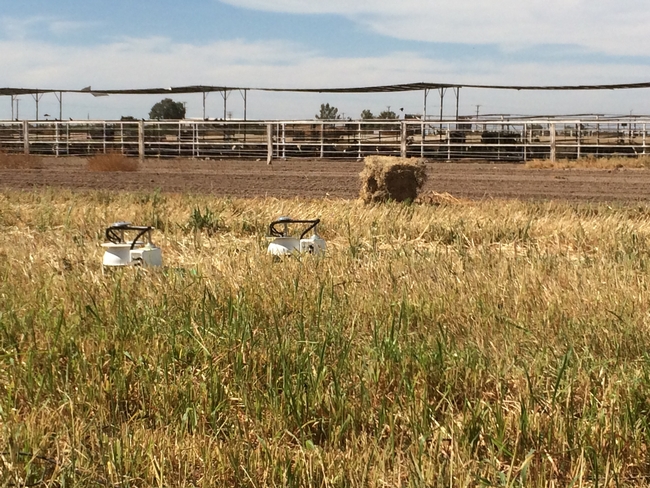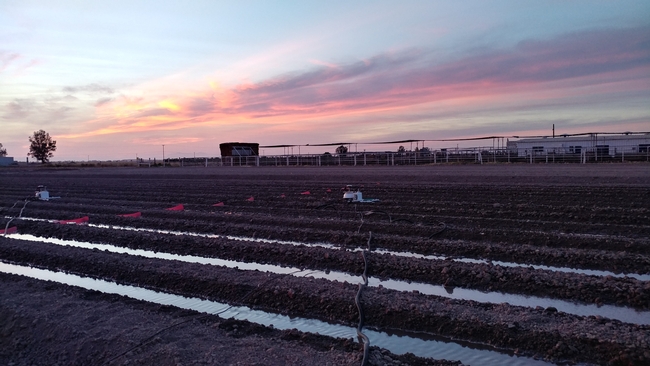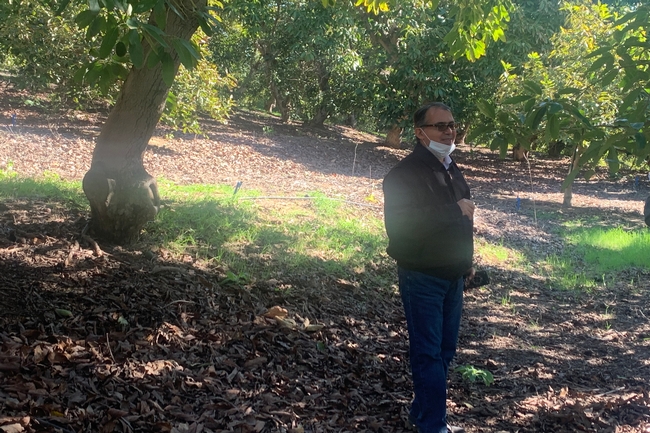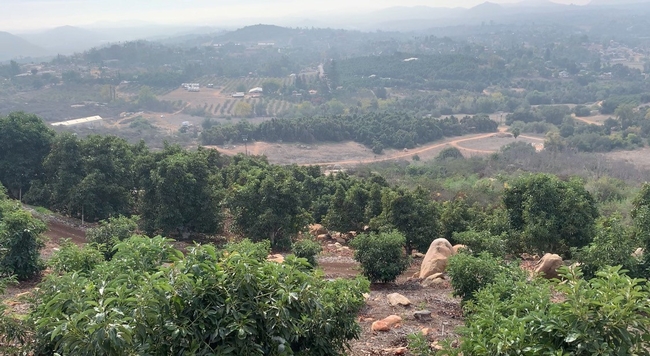Posts Tagged: crops
New UC study helps growers estimate cover crop costs and potential benefits
Cover crops offer many potential benefits – including improving soil health – but not knowing the costs can be a barrier for growers who want to try this practice. To help growers calculate costs per acre, a new study on the costs and potential benefits of adding a winter cover crop in an annual rotation has been released by UC Agriculture and Natural Resources, UC Cooperative Extension and the UC Davis Department of Agricultural and Resource Economics.
Led by UC Cooperative Extension farm advisors Sarah Light and Margaret Lloyd, the cost study is modeled for a vegetable-field crop rotation planted on 60-inch beds in the lower Sacramento Valley of California. Depending on the operation, this rotation may include processing tomatoes, corn, sunflower, cotton, sorghum and dry beans, as well as other summer annual crops.
“This cost study can be used by growers who want to begin cover cropping to determine the potential costs per acre associated with this soil-health practice,” said Light, a study co-author and UC Cooperative Extension agronomy advisor for Sutter, Yuba and Colusa counties.
“Based on interviews with growers who currently cover crop on their farms, this cost study models a management scenario that is common for the Sacramento Valley. In addition, growers who want to use cover crops can gain insight as to what standard field management practices will be from planting to termination.”
At the hypothetical farm, the cover crop is seeded into dry soil using a grain drill, then dependent on rainfall for germination and growth.
“Given the frequency of drier winters, we included the cost to irrigate one out of three years,” said Lloyd.
A mix of 30% bell bean, 30% field pea, 20% vetch and 20% oats is sown in the fall. Depending on winter rainfall, soil moisture and the following cash crop, the cover crop is terminated in mid to late spring. The cover crop is flail mowed and disced to incorporate the residue into the soil.
The study includes detailed information on the potential benefits and the drawbacks of cover cropping.
Another consideration for growers is that multiple programs such as CDFA's Healthy Soils Program, various USDA-funded programs (EQUIP, the Climate-Smart Commodities, etc.), and Seeds for Bees by Project Apis m. offer financial incentives for growers to implement conservation practices, such as cover crops.
“This study can provide growers with a baseline to estimate their own costs of using winter cover crops as a practice. This can be useful to calculate more precise estimates when applying for some of these programs and/or weigh the costs per acre with expected benefits in terms of soil health, crop insurance premium discounts or other benefits provided by the cover crops,” said Brittney Goodrich, UC Cooperative Extension agricultural and resource economics specialist and study co-author.
“Last year, the USDA's Pandemic Cover Crop Program gave up to a $5/acre discount on crop insurance premiums for growers who planted a cover crop, and there is potential this will get extended going forward,” Goodrich said.
A list of links to resources that focus specifically on cover crops is included in the study. Five tables show the individual costs of each cultural operation from ground preparation through planting and residue incorporation.
The new study, “2022 - Estimated Costs and Potential Benefits for a Winter Cover Crop in an Annual Crop Rotation - Lower Sacramento Valley,” can be downloaded from the UC Davis Department of Agricultural and Resource Economics website at coststudies.ucdavis.edu. Sample cost of production studies for many other commodities are also available on the website.
This cost and returns study is funded by the UC Davis Department of Agricultural and Resource Economics.
For an explanation of calculations used in the study, refer to the section titled “Assumptions.” For more information, contact Don Stewart in the Department of Agricultural and Resource Economics at destewart@ucdavis.edu, Light at selight@ucanr.edu, or Lloyd at mglloyd@ucanr.edu.
Drip-irrigation study sees ‘huge’ reduction in water, fertilizer use for sweet corn
Study by UCCE advisor in Imperial County also shows 5% increase in yield
A new study suggests that drip irrigation for sweet corn can significantly conserve water, reduce fertilizer use and boost crop yield in the low desert of California – and likely in other areas of California with similar conditions.
Although Imperial County is California's top sweet corn-producing county, with about 8,000 acres planted on average each year, irrigation methods for this crop have been rarely studied in this region (or anywhere else in the state), according to Ali Montazar, UC Cooperative Extension irrigation and water management advisor for Imperial, Riverside and San Diego counties.
Montazar conducted a study in the Imperial Valley over two crop seasons, 2020-21 and 2021-22, to demonstrate and quantify the potential benefits of switching to drip irrigation from the more common furrow irrigation method. The study, available in a recent issue of UC Agriculture and Natural Resources' Agricultural Briefs, will be published in a future issue of Vegetables West.
“I'm hoping with this project we can encourage growers to adopt it, because it seems very promising,” said Montazar, noting that drip irrigation is a “new practice” for sweet corn in California.
Among the 11 commercial sweet corn fields in the study over the 2021-22 season, the six that were under drip irrigation used, on average, 37% less water than the five under furrow irrigation. In absolute terms, the drip-irrigated fields saw an average water savings of 2.2 acre-feet per acre; for Montazar, who has studied drip for a variety of crops in the Imperial Valley, that was an astonishing result.
“I've worked with drip on processed onions, lettuce, alfalfa, spinach … we've never seen a figure like 2.2 acre-feet per acre, that's huge,” he said, attributing the dramatic drop-off to the high volume of water required to furrow-irrigate the sandy soil in the Imperial Valley.
More efficient irrigation also means less fertilizer is needed – a boon to the environment and Salton Sea water quality, as well as growers' bottom line. With fertilizer prices continuing to rise, sweet corn growers using drip could see a substantial 25% cost savings on fertilizer expenses – about $150 per acre less – compared to furrow irrigation, according to Montazar's study.
And by relieving plants of the stress from over- and under-irrigated conditions, drip irrigation helps keep soil moisture at its “sweet spot” – resulting in a 5% increase in marketable crop yield for sweet corn in the study.
“When we have a better, more efficient irrigation system, we can maintain soil moisture at a desired level, over time and space,” Montazar explained.
Because the benefits of drip appear to be linked to soil conditions (sandy loam, and other light soils), Montazar believes that this irrigation practice could deliver relatively similar water and fertilizer savings and improved crop yield in other regions across California, regardless of climactic differences.
“If you use drip in any part of the state, you have the benefits of drip – more uniform water application, more uniform fertilizer – that's not related to the desert,” he said. “That's part of the system's potential.”
Montazar plans to follow up on his preliminary study with additional research on sweet corn and drip irrigation during the 2022-23 crop season.
UC ANR names Marino, Culumber Presidential Chairs for Tree Nuts
Two UC Cooperative Extension scientists have been selected as Presidential Chairs for Tree Nuts at University of California Agriculture and Natural Resources.
Giulia Marino, UCCE specialist, will be the Presidential Chair for Tree Nut Genetics and Mae Culumber, UCCE nut crops advisor, will be the Presidential Chair for Tree Nut Soil Science and Plant Water Relations, announced Glenda Humiston, UC vice president for agriculture and natural resources.
The endowed chairs will give the two scientists a dedicated source of funding for five years for their ongoing agricultural research. UC Agriculture and Natural Resources established the two $1 million endowments in 2015. Half of the funds for the endowed chairs was donated by the California Pistachio Research Board and the other half was provided by UC Office of the President.
“The California Pistachio Research Board appreciated the opportunity to create these Presidential Chairs with the dedicated flexible funding it provides the scientists,” said Bob Klein, manager of the California Pistachio Research Board. “Mae and Giulia have stellar research records, have a history of research on California pistachios, and deserved both consideration and the award of these Chairs. The Board was pleased with the previous incumbents and is now looking forward to working with both Giulia and Mae in their programs on Genetics and Soil Science/Water Relations.”
Marino, who joined UC ANR in 2020, is based at UC Kearney Agricultural Research & Extension Center in Parlier. Her research integrates germplasm preservation and evaluation with tree physiology to improve orchard system profitability and abiotic-stress resilience. She explores the interactions between cultivar-rootstock traits, soil conditions and management practices.
“The program has the objectives of increasing the genetic diversity of the scion and rootstock cultivars used by the pistachio industry to improve grower returns and reduce its susceptibility to climate change,” Marino continued. “Rootstock projects include novel rootstocks more tolerant of boron in irrigation water, dwarfing rootstocks for higher early yields and more efficient use of pruning and harvest inputs. Scion objectives include novel scions for higher yield and trees less sensitive to inadequate winter chilling.”
One of her current research lines focuses on the characterization of low vigor cultivars and/or rootstocks to increase orchard planting density and reduce management costs in olive, pistachio and almond. She develops protocols for irrigation management based on genotype-specific physiological responses to water stress. Marino also studies the impact of saline sodic soil conditions on pistachio physiology and of low winter chill on cherry and pistachio tree and fruit physiology.
Marino earned a doctoral degree in fruit and forestry tree systems and master's and bachelor's degrees in agricultural science, all from the University of Palermo in Italy.
Culumber, UCCE nut crops advisor for Fresno and Kings counties, focuses on enhancing the sustainability and viability of nut crop production through applied research and outreach education with emphasis on soil and water conservation and reducing the impact of production practices on air quality and greenhouse gas emissions. Culumber partners with fellow UC advisors, specialists, campus faculty, growers and other industry stakeholders to find practical, sustainable solutions for issues including soil salinity, tree training and pruning, tree nutrition, and pest and disease management.
“As Presidential Chair, I will utilize these generous funds from the Pistachio Research Board to augment my collaborative outreach extension and applied research efforts to understand
and develop solutions to soil and water quality problems faced by pistachio growers and other nut crop producers across the San Joaquin Valley,” Culumber said.
She is collaborating on a CDFA Fertilizer Research and Education Program project that provides irrigation and nitrogen management training for certified crop advisors and growers to adopt practices that conserve water and protect water quality. She is also studying how to improve estimates of crop evapotranspiration and forecasting for major California crops for more precise irrigation. Culumber is leading research on the effects of whole orchard recycling on air quality and climate resilience, soil health, tree growth and productivity in second-generation orchards.
Culumber earned a Ph.D. in soil science and agroecology and a master's in plant science and molecular ecology, both from Utah State University, and a bachelor's in biology from University of Wisconsin-Stevens Point.
Bruce D. Lampinen, UC Cooperative Extension integrated orchard management, walnut and almond specialist in the UC Davis Department of Plant Sciences, received the first Presidential Chair for Tree Nut Soil Science and Plant Water Relations. Craig Kallsen, UC Cooperative Extension farm advisor in Kern County who specializes in fruit and nut crops, received the Presidential Chair for Tree Nut Genetics.
Drip irrigation in arid regions can cut greenhouse gas emissions, improve air quality
Study at Desert Research and Extension Center highlights agriculture's sustainability role
Under the blistering sun of Southern California's Imperial Valley, it's not surprising that subsurface drip irrigation is more effective and efficient than furrow (or flood) irrigation, a practice in which up to 50% of water is lost to evaporation.
But a recent study also concludes that drip irrigation can dramatically reduce greenhouse gas emissions from soil – which contribute to climate change and unhealthy air quality in the region – without sacrificing yields of forage crops alfalfa and sudangrass.
“It was really exciting to see,” said lead author Holly Andrews, a National Science Foundation postdoctoral fellow at the University of Arizona. “The crop yield was at least maintained and in some cases increased, but the water use and gaseous emissions were especially decreased under drip irrigation.”
Desert REC crucial to collecting data
Andrews and her colleagues gathered data from field studies at University of California Agriculture and Natural Resources' Desert Research and Extension Center, a crucial hub of desert agriculture research for more than 100 years. Studies in that context are increasingly important, as much of California and the Southwest becomes hotter and drier.
“We already have this history of looking at drip irrigation at this site, so our study was trying to build on that,” said Andrews, who lauded Desert REC's facilities and staff.
In their study published in Agriculture, Ecosystems & Environment, researchers found that – in comparison to furrow irrigation – drip irrigation in alfalfa slashed per-yield soil carbon dioxide emissions by 59%, nitrous oxide by 38% and nitric oxide by 20%.
Nitrous oxide is a greenhouse gas with nearly 300 times more warming potential as carbon dioxide, and nitric oxide is a precursor to ozone and major contributor to air pollution.
While drip irrigation only decreased water demand 1% in alfalfa, the practice led to a substantial 49% decrease in irrigation for sudangrass. For more fertilizer-intensive sudangrass, drip irrigation also reduced soil emissions of nitrous oxide by 59% and nitric oxide by 49% – the result of drip irrigation making those fertilizers more efficient.
Water management can help mitigate climate change
Studying alfalfa and sudangrass – forage crops with very different fertilizer requirements – was a strategic choice by the researchers. They are number one and number three on the list of most widely grown crops by acreage in the Imperial Valley (Bermudagrass, another forage crop, is number two).
With so much land dedicated to producing these crops, the adoption of drip irrigation at scale could deliver significant benefits to residents' health and quality of life.
“The thought that saving water can increase yields while lowering the emission of trace gases that affect regional air quality and Earth's climate is quite encouraging,” said Pete Homyak, an assistant professor of environmental sciences at UC Riverside who contributed to the study. “This is especially true for the Imperial Valley, an arid region where water is a limited resource and where residents are exposed to bad air quality.”
Homyak, who is affiliated with UC ANR through UC Riverside's Agricultural Experiment Station, said that this study illustrates how changes in water management can substantially mitigate agricultural impacts on the environment.
The study findings should encourage growers to replace furrow irrigation systems with drip irrigation infrastructure – especially in combination with financial incentives from the state, such as cap-and-trade and carbon credit programs, that can help defray high installation costs.
“It really is worthwhile if you're thinking sustainability and environmental activism in how agriculture can actually support climate change mitigation,” Andrews explained. “These practices might be a way that we can start to change that picture a little bit – and make agriculture more sustainable by tailoring irrigation management to local climate conditions.”
In addition to Andrews and Homyak, the other study authors are Patty Oikawa, California State University, East Bay; Jun Wang, University of Iowa; and Darrel Jenerette, UC Riverside.
Avocado growers to get irrigation tools, strategies from UC ANR’s Montazar
CDFA grant supports research to optimize water use for iconic California crop
California growers, who account for more than 90% of avocado production in the U.S., will soon be getting some help in weathering the extreme fluctuations of climate change.
Ali Montazar, a University of California Cooperative Extension irrigation and water management advisor, recently received a grant to develop tools and strategies that optimize growers' irrigation practices across Southern California – the state's avocado belt. California avocados are valued at more than $411 million, according to the National Agricultural Statistics Service.
“This region faces uncertain water supplies, mandatory reductions of water use, and the rising cost of water – while efficient use of irrigation water is one of the highest conservation priorities,” Montazar said. “Water is the most critically important input to avocado production.”
At the California Avocado Commission's suggestion, Orange County was added to the study to better capture the range of climates and cropping systems across the region, Montazar said.
He hopes to develop “crop coefficients” that avocado growers can use to determine the optimal irrigation for their crop based on a host of factors: soil type and salinity, canopy features, row orientation, slopes, soil and water management practices, and more.
“Growers are unclear on how much water the crop actually needs under those conditions,” Montazar said.
He will incorporate data from the actual water use in the experimental orchards – including information from the newest soil moisture and canopy temperature sensors – to help ensure growers do not under- or overwater their crops. Overirrigating contributes to a devastating disease, avocado root rot, caused by the plant pathogen Phytophthora cinnamomi.
Another component of the grant supports outreach in disseminating these resources and best practices to the broader agricultural community.
“Developing and adopting these tools and information may have a significant impact on water quality and quantity issues and bolster the economic sustainability of avocado production not only in the well-established production region of Southern California, but also in Kern and Tulare counties where new avocado plantings are growing,” Montazar said.
Preliminary findings and recommendations are expected at the end of 2022.

